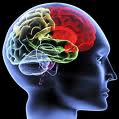PHLOGISTIX Founder, Dr. Festoff, published a paper in the August 2016 issue of the Journal of Neuroinflammation with colleagues Drs. Luca Cucullo and Ravi Sajji of the Texas Tech University Heath Sciences Center (TTUHSC) School of Pharmacy at Amarillo, TX. The article was the result of work by PHLOGISTIX and the Blood Brain Research Center of TTUHSC, in association with KUMC,showing clear evidence that damage-associated molecules (DAMPs), amyloid beta peptide (A) and high mobility group box protein 1 (HMGB1), are elevated in the mild cognitive impairment (MCI) to Alzheimer’s disease (AD) continuum. This suggest their potential use as biomarkers in preclinical AD diagnosis in at-risk populations. These would include genetics-at–risk, age-at- risk and head injury-at-risk cohorts.
Since publication, the web-based Altmetrics, a metrics and qualitative database complementary to traditional, citation-based metrics has scored this article https://www.altmetric.com/details/10815432#score Compared to these this article has done particularly well and is in the 91st percentile: it’s in the top 10% of all research outputs ever tracked by Altmetric.
